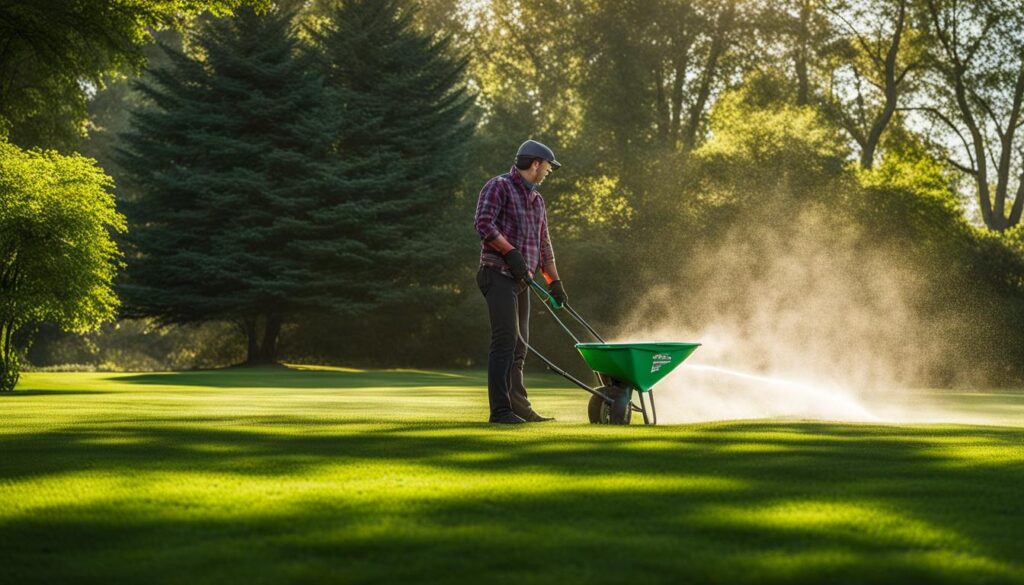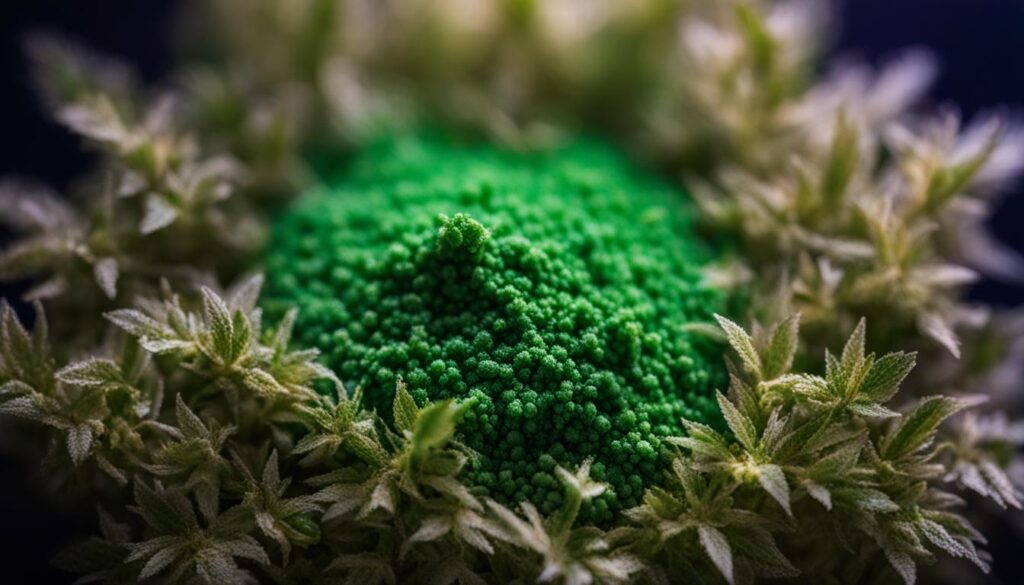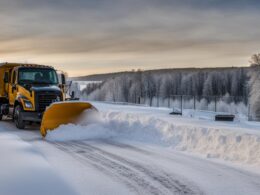Weed and feed is a popular lawn care product that combines the benefits of a broadleaf herbicide with a complete fertilizer. If you want to have a healthy, weed-free lawn, it’s important to know when and how to apply weed and feed effectively. In this article, we will guide you through the optimal timing for weed and feed application to help you achieve the best results.
When it comes to applying weed and feed, timing is crucial. The ideal time to apply weed and feed is in the spring when weeds start popping up. By applying it at the right time, you can target and eliminate those pesky weeds before they take over your lawn.
However, if the spring application doesn’t completely remove all the weeds, you can consider applying a second dose in the fall. It’s important to note that you should wait at least two months between applications to give your grass time to recover and avoid over-application.
For newly established lawns or freshly planted grass seed, it’s recommended to wait until you’ve mowed at least twice before applying weed and feed. This allows the grass to establish a strong root system before introducing any weed control or fertilization.
Key Takeaways:
- Apply weed and feed in the spring when weeds start appearing
- If needed, a second dose can be applied in the fall, waiting at least two months between applications
- For new lawns or freshly planted grass seed, wait until you’ve mowed at least twice before applying weed and feed
Considerations When Using Weed And Feed
Before using weed and feed products, it’s important to consider whether you actually need both the herbicide and the fertilizer. Assessing your lawn’s needs will help you determine the best course of action for maintaining a healthy and weed-free lawn.
If your grass is already healthy and thriving, you may not need to fertilize it further in the spring. Over-fertilization can be detrimental to your lawn and may lead to excessive growth or even burn the grass. Instead, consider a regular schedule of mowing, watering, and proper lawn care practices to keep your grass healthy.
Similarly, if you have lawn weeds in the fall that you want to eliminate, be cautious with feeding warm-season lawns late in the season. Applying weed and feed products too close to winter can increase the risk of winterkill, especially in regions with cold climates. It’s essential to strike a balance between controlling weeds and protecting your lawn from potential damage.
Assessing your lawn’s needs can help you decide whether a weed and feed product is the best choice for your specific situation. Consider the condition of your grass, the prevalence of weeds, and the time of year before making a decision. Remember, using weed and feed effectively involves understanding the unique needs of your lawn.
By making informed decisions about when and how to use weed and feed products, you can effectively maintain a healthy and weed-free lawn.
How To Apply Weed And Feed
When it comes to applying weed and feed, following the manufacturer’s instructions is crucial for optimal results. Here are some essential tips to consider:
Mow your lawn beforehand
Before applying weed and feed, make sure to mow your lawn a few days prior to the application. This ensures that the grass is at the recommended height for better absorption of the product.
Use a broadcast spreader
Utilize a broadcast spreader to evenly distribute the weed and feed product across your lawn. By making two passes in a crosshatch pattern, you can ensure comprehensive coverage, targeting all areas of the lawn.
Tip: Be cautious near the lawn’s perimeter to avoid spreading the granules into flower beds or ornamental shrubbery.
Allow time before watering
After applying weed and feed, it’s important to wait a few days before watering your lawn. This allows the product to properly settle and penetrate the soil, increasing its effectiveness.
Remember: Do not apply weed and feed more than twice a year to prevent over-application and potential damage to your lawn.
Protective clothing and safety
When working with weed and feed products, always wear protective clothing, such as gloves and long sleeves, to avoid skin irritation. Additionally, ensure that children and pets stay away from treated areas until the product has been watered in or fully absorbed.
What’s in Weed And Feed?
Weed and feed products are a powerful combination of a broadleaf herbicide and a complete fertilizer, designed to tackle weeds while nourishing your lawn. Understanding the ingredients in weed and feed can help you make an informed decision about which product is right for your lawn.
The Weed Portion:
The herbicide portion of weed and feed targets broadleaf weeds like dandelions and chickweed. It contains herbicides such as 2,4-D or Dicamba, which effectively eliminate these unsightly weeds from your lawn. These herbicides work by disrupting the growth patterns of the weeds, ultimately causing their demise.
The Feed Portion:
The “feed” portion of weed and feed is a complete fertilizer that provides essential nutrients to your lawn. This portion typically contains nitrogen, phosphorus, and/or potassium, which are vital for healthy grass growth. Nitrogen promotes lush green foliage, phosphorus stimulates root development, and potassium improves overall plant health and resilience.
When combined, the herbicide and the fertilizer help kill off weeds and simultaneously promote the growth of a healthy, vibrant lawn. However, it’s crucial to choose a weed and feed product that is suitable for your specific weed and grass types. Different products may have varying concentrations of herbicides and nutrients, so be sure to read the labels carefully and select the one that aligns with your lawn’s needs.
Remember, always follow the manufacturer’s instructions and safety guidelines when applying weed and feed products.
Conclusion
In conclusion, weed and feed is a versatile product that combines the benefits of weed control and lawn nourishment. By applying it at the appropriate time in the spring and considering a fall application if needed, you can effectively maintain a healthy and weed-free lawn. However, it’s crucial to assess your lawn’s specific needs and determine if separate herbicide and fertilizer applications would be more suitable for your situation.
When applying weed and feed, always follow the recommended instructions provided by the manufacturer. This includes wearing protective clothing to prevent skin irritation and prioritizing safety, especially when children and pets are present. By adhering to these guidelines, you can ensure a successful and safe weed and feed application.
Overall, when used properly, weed and feed can be a valuable tool in achieving a lush and weed-free lawn. It’s a convenient solution that combines the benefits of both weed control and fertilization. Consider the specific requirements of your lawn, follow the application instructions, and prioritize safety to maximize the effectiveness of weed and feed in maintaining a vibrant and healthy outdoor space.
What is the Best Timing for Applying Weed and Feed After Watering with Pre-Emergent?
The timing for watering after preemergent application is crucial when applying weed and feed. It is best to water the lawn thoroughly before applying the preemergent to activate the product. Wait for 48-72 hours after preemergent application before watering again to ensure it has properly settled into the soil.
FAQ
When is the best time to apply weed and feed to my lawn?
The best time to apply weed and feed to your lawn is in the spring after weeds start popping up. If the spring application doesn’t remove all the weeds, you can apply a second dose in the fall, but wait at least two months between applications. It’s important to give your grass time to recover and avoid over-application. Additionally, for new lawns or freshly planted grass seed, wait until you’ve mowed at least twice before applying weed and feed.
Do I always need both the herbicide and the fertilizer in weed and feed?
Before using weed and feed products, it’s important to consider whether you actually need both the herbicide and the fertilizer. If your grass is already healthy and thriving, you may not need to fertilize it further in the spring. Similarly, if you have lawn weeds in the fall that you want to eliminate, be cautious with feeding warm-season lawns late in the season as it can increase the risk of winterkill. It’s crucial to assess your lawn’s needs and decide whether using a weed and feed product is the best choice for your specific situation.
How do I apply weed and feed to my lawn?
When applying weed and feed, it’s important to follow the manufacturer’s instructions. Mow your lawn a few days before applying, ensuring the grass is at its recommended height. Use a broadcast spreader to apply the product uniformly across the lawn, making two passes to create a crosshatch pattern. Be cautious around the lawn’s perimeter to avoid spreading the granules into flower beds or ornamental shrubbery. Wait a few days after application before watering and never apply weed and feed more than twice a year. Remember to always wear protective clothing and follow safety instructions to prevent skin irritation and protect children and pets.
What does weed and feed contain?
Weed and feed products contain a combination of a broadleaf herbicide and a complete fertilizer. The herbicide portion targets broadleaf weeds like dandelions and chickweed, usually with herbicides such as 2,4-D or Dicamba. The “feed” portion is a fertilizer that typically contains nitrogen, phosphorus, and/or potassium. This combination helps kill weeds while providing essential nutrients to the lawn. It’s important to select a weed and feed product suitable for your specific weed and grass types.











